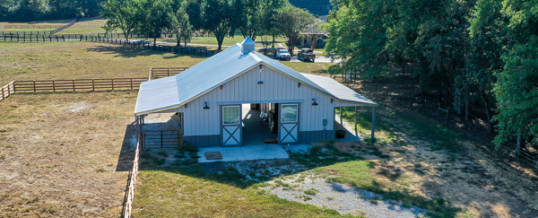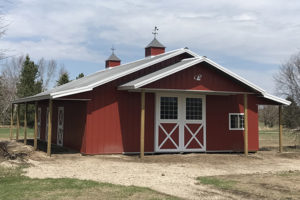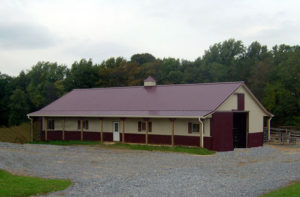
3 Basic Steps to Horse Training – Residential Horse Barns
Now that you’ve ordered one of the small Colorado horse barns, it’s time to pay more attention to the new horse coming your way. Say your Fourth Grader excitedly anticipates bringing the mare home or welcoming a young foal. To prepare for the new responsibilities, your family can start probing the secrets of good horse whisperers.
You might learn how training young foals and ponies begins informally. Owners can simply visit them often and get them used to being around people. They talk to them and lead them gently around the arena or paddock. By the age of two, horses are old enough for more formal horse training. Here are 3 basic steps to horse training.
Step 1: Observe Horses in General
Take some time to study the behaviors of wild horses. Learning how these herd animals live teaches about their inherent behaviors. In the wild, a stallion heads up a herd of mares. Usually, one of the mares takes a lead role. She determines where the herd goes, not the stallion. Transferring this knowledge into horse training, the trainer wants to gain the role as that “lead mare”. Out of respect, the horse follows the trainer.
Trainers use positive and negative reinforcement combined to achieve their goals. Positive interaction promotes respect while the negative tools often create fear. We want to lean towards a positive approach so the horse desires to listen and be with us. So, relax and put on your horse sense and see how others do it.
You can easily arrange to observe horses in the field and/or horses being trained. This step helps you get to know how horses think and how they react. You may also notice how the attitudes of horse trainers effect the responses of horses.
Step 2: Lay Groundwork and Take Baby Steps
Get used to the idea of moving forward very slowly. Teach one tiny new concept at a time. For example, introduce physical equipment into the horse’s aura. Let them sniff or become familiar with articles before using them with the horse. Make almost imperceptible altercations. If you put something on the horse, take it off shortly and allow the horse to relax and do something else it has already mastered.
Here are some of the skill sets that you will slowly introduce to your horse:
- Wearing a halter
- Longeing or ground training with long rope
- Walking beside you on a lead
- Wearing a bit
- Accepting a blanket
- Accepting a saddle
- Girth, leathers, and stirrups
Step 3: Cool Down Time
End the session on a high note. When the horse seems content with its performance, stop for cool down. Both the horse and trainer need to cool down and relax.
Other Options for Horse Training
Obviously, we can delve into the world of horse training in many ways. In Colorado, many communities feature clinics, clubs, and camps. Additionally, you’ll find dozens of online videos for help any time of the day or night. In Colorado, especially in Douglas County, and Elbert County down through Castle Rock to Colorado Springs, lots of horse lovers will gladly give you pointers, experienced horse trainers among them. Enjoy your horses and the new equestrian arena or horse barn for years to come.
Colorado Pole Barn Builders – Sapphire Construction, Inc.
When you’re ready to lead your horses into a Colorado horse barn, we’re the first to be happy we’re building it for you. If your friends become interested in private horse barns, send them our way by contacting Sapphire Construction, Inc. at (303) 619-7213.
MAR
2021



About the Author:
Allen Randa is a second generation Master Carpenter and Owner of Sapphire Construction Inc. Allen personally manages each project from beginning to end. That includes the first meeting, the estimate, the contract and architectural designs.